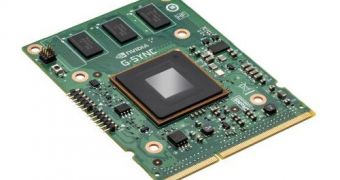Earlier this week, Advanced Micro Devices said it had a hardware-free alternative to NVIDIA's G-Sync technology, which syncs the frame rates between a graphics card and the monitor, preventing screen tearing without the lag caused by V-Sync. AMD called its tech “FreeSync” and said that the secret lay in the ability of many of its graphics cards to alter refresh rates on the fly.
The implementation isn't standardized, but it does save power on laptops.
Anyway, AMD basically said that the hardware module that NVIDIA made to enable G-Sync on a monitor was unneeded, if you made an AMD-based PC anyway.
G-Sync specifies how long the display remained blank on a frame-by-frame basis. The variable refresh rate capability on AMD cards works in a similar way.
The only reason this didn't catch on, AMD said, was lack of demand. Another thing AMD said was that triple-buffering could solve the problem addressed by G-Sync too.
NVIDIA has since responded, through Tom Peterson who told the Tech Report that laptop displays could do that only because they were connected via embedded DisplayPort or older LVDS.
Standalone monitors have their own internal scaling solutions, and those chips don't support the variable refresh rate that AMD's cards boast about.
And since NVIDIA went to the trouble of installing 768 MB of onboard memory on the G-Sync PCB, one can assume that they actually did try to come up with a software solution first.
As it usually happens when a debate is going on, both sides probably have their points here. Granted, NVIDIA might lose out because of the $50 / €50 it takes to add G-Sync to a monitor, but it's still better than if you had to buy a standalone hardware kit for $100 / €100 or $150 / €150.
Since monitors are pretty long-lived, the Santa Clara, California-based company might get away with it and even rake up some nice reputation.

 14 DAY TRIAL //
14 DAY TRIAL //